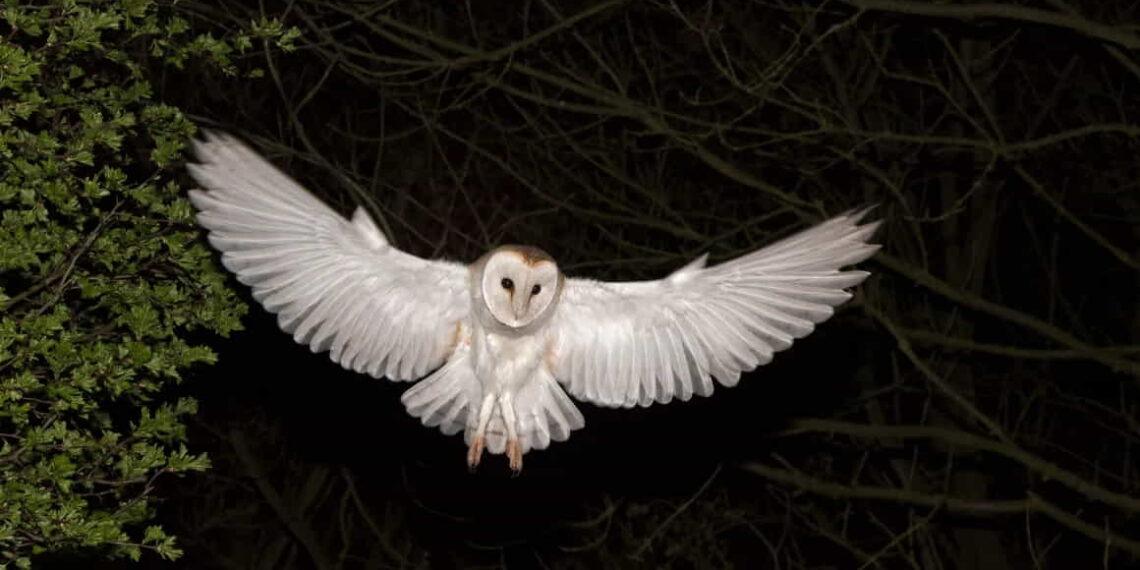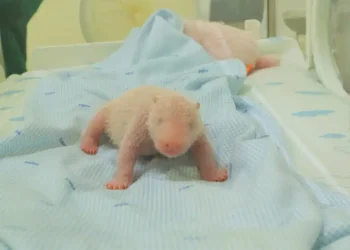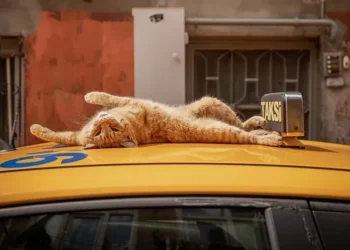Why the Barn Owl’s “Shocking” White Plumage Actually Helps It Hunt
Barn owls are known for their majestic, silent flight as they hunt at night, targeting rodents with precision. But there’s one feature of the barn owl that has left scientists puzzled: its bright white feathers. This strikingly white plumage, found on the owl’s underbelly and wings, seems counterintuitive. In theory, it should make the owl more visible to prey, potentially disrupting its stealthy approach.
However, after years of research, biologist Juanjo Negro and his team at the Doñana Biological Station in Seville, Spain, have uncovered a surprising reason why the owl’s white feathers might not be a hindrance.
A Stunning Discovery: Camouflage, Not Shock Value
In previous studies, researchers suggested that the owl’s white plumage might actually “shock” its prey, causing rodents to freeze in fear and become easier targets. However, the latest research led by Negro provides an entirely new explanation: the barn owl’s white feathers act as a form of camouflage, blending seamlessly with the moonlight.
The study, published in PNAS, explains that the owl’s reflective feathers mimic the glow of the moon, allowing it to blend into the night sky. This makes it nearly invisible to rodents, even as the owl approaches them from various angles. Instead of standing out, the barn owl’s bright underside helps it remain hidden, creating an element of surprise when it strikes.
How It Works: The Moon’s Reflection
The research shows that when the moon is visible, the owl’s white underside reflects the moonlight, making the bird blend in with the sky rather than stand out as a dark silhouette. According to Negro, a dark bird against the bright night sky would be easily spotted by prey, but a white bird reflects moonlight, making it harder for rodents to detect.
The researchers’ calculations revealed that the contrast between the owl’s reflective feathers and the moonlit sky is subtle enough to fall below the detection threshold of rodents’ visual acuity. This allows barn owls to approach their prey silently and undetected, even from several meters away.
A Natural Camouflage: Parallels in the Animal Kingdom
This form of camouflage isn’t unique to barn owls. A similar phenomenon is seen in the ocean, where fish have light-colored undersides to blend in with the sunlit water above, making them less visible to predators lurking below.
Interestingly, not all barn owls have white plumage. Some have reddish-brown feathers instead. While this new study didn’t focus on how hunting success correlates with feather color, earlier research suggests that owls with whiter underbellies are generally more effective hunters during a full moon.
A Debate: Camouflage vs. Shock Value
Alexandre Roulin, a barn owl expert from the University of Lausanne, has previously argued that the white coloration of barn owls shocks their prey, causing them to freeze in place. He’s not entirely convinced by the new camouflage explanation but also doesn’t dismiss it. Roulin believes that both theories could be true, with the owl’s white feathers aiding camouflage at long distances and helping immobilize prey up close.
Roulin also pointed out that voles tend to freeze longer when they see a white owl approaching, which he believes may indicate the owl is more visible. This immobilization is a typical anti-predator response, suggesting that the voles recognize the white owl as a threat.
While Negro acknowledges this viewpoint, he argues that the owl’s silent flight contradicts the idea that it would want to make itself more visible. Nevertheless, Negro agrees that both camouflage and the “shock” response could coexist in different hunting scenarios.
The Importance of Nocturnal Camouflage
Camouflage is commonly associated with daytime predators that rely on light and shadow to remain hidden, but nocturnal camouflage is a lesser-explored concept. Negro suggests that many animals have developed specific adaptations for nighttime hunting, especially given that half of the world’s animal species are nocturnal.
The study of nocturnal ecology is still emerging, but as researchers explore the role of the moon in the lives of nocturnal animals, it’s becoming clear that the barn owl’s brilliant white feathers may have evolved to give it a unique edge during nighttime hunts.
This article was rewritten by JournosNews.com based on verified reporting from trusted sources. The content has been independently reviewed, fact-checked, and edited for accuracy, neutrality, tone, and global readability in accordance with Google News and AdSense standards.
All opinions, quotes, or statements from contributors, experts, or sourced organizations do not necessarily reflect the views of JournosNews.com. JournosNews.com maintains full editorial independence from any external funders, sponsors, or organizations.
Stay informed with JournosNews.com — your trusted source for verified global reporting and in-depth analysis. Follow us on Google News, BlueSky, and X for real-time updates.














